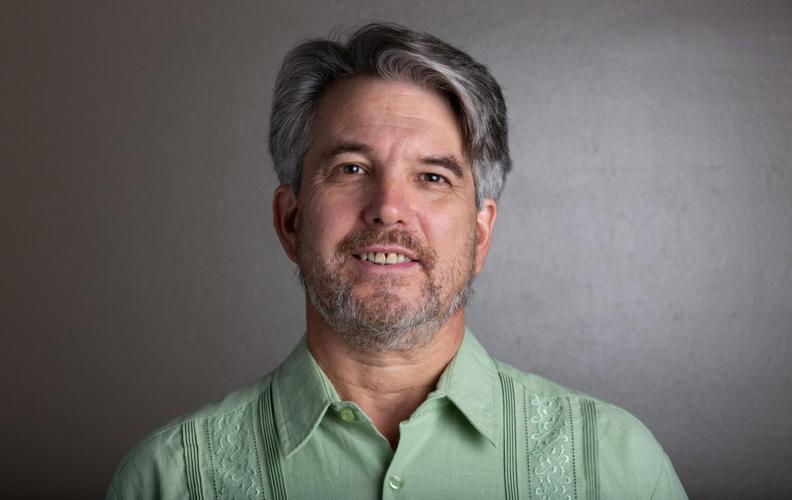This being the university, naturally the issue comes back to equity.
But this time it’s not activist students or faculty demanding equity in education from the administration.
Instead, the administration is using equity, or “equitability,” as a reason not to fully repay employees the $43.5 million worth of pandemic pay cuts. If everybody can’t benefit equitably, then nobody can, they argue.
It’s a clever twist — but probably shortsighted on the administration’s part. In this tight job market, as workers are dumping employers amid the “great resignation,” the University of Arizona needs a sparkling reputation among employees and recruits.
The fact that the UA had the biggest pandemic furlough program among peer universities is a stain the UA should cleanse from its reputation.
The UA began pondering furloughs soon after the pandemic altered our lives and sent classes into remote mode in March 2020.
This being the university, again, a task force was formed — the Financial Sustainability Task Force. And the task force, of course, had working groups — seven of them. The central question was a big one: how to deal with a projected $250 million shortfall.
Among other things, the task force came up with a furlough program. The idea was that furloughs — reducing people’s pay by cutting the number of days they work — were the best way to avoid a wave of layoffs, though some job losses did occur anyway.
The administration decided on furloughs, employees protested, the administration changed the plan, then delayed implementing it until Aug. 10, 2020. It was pretty harsh. Better than losing your job, but harsh.
Employees making $44,500 and $44,999 were to lose 5.25 days of work and pay over a 12-month period — a cut of just over 5%. The more money an employee made, the number of furlough days rose until reaching 20 days for people making 12-month salaries of $203,500 or more — a 20% cut.
UA President Robert Robbins was in that 20% category.
The furloughs never sat well with employees. Some formed a union of all university employees, United Campus Workers Arizona Local 7065. And the furlough issue continues to rankle, in part because Arizona State University did nothing of the sort.
Also, Northern Arizona University, which laid off some employees and imposed furloughs, is now paying back employees the money lost to the furloughs. Granted, in NAU’s case, that’s a total of about $5 million in a $600 million budget, as opposed to the UA’s $43.5 million in a budget greater than $2 billion.
This issue came to a head during a Dec. 6 Faculty Senate meeting. Gary Rhoades, professor of education policy studies and practice, told an audience including the UA president that university employees should be repaid the $43.5 million that the university saved through the furloughs.
“My request would simply mean $8.7 to $10.1 million a year for four to five years, which is quite manageable,” Rhoades said. “Our comprehensive financial report indicates strong cash flow and several hundred million dollars in unrestricted reserves.”
The university’s chief financial officer, Lisa Rulney, said Rhoades was painting too rosy a picture of UA finances. Individual colleges may be in good shape, she noted, but others are still experiencing losses and cutting budgets.
“From the beginning our guiding principle has been to preserve as many jobs as possible and to use equitable, institutionwide approaches,” Rulney told the Faculty Senate. “We don’t have an equitable situation in terms of which units have the cash or resources to cover that repayment.”
Robbins chimed in during a Q&A session with the faculty to say that he sees both arguments — for paying people back and for ensuring equity across the university’s colleges. And he hinted that colleges could make it work.
“There’s a lot of money in reserve in colleges — lots,” Robbins said. “I know it’s encumbered and there’s plans for the future, but we could go back to those funds.”
But Leila Hudson, a professor of Middle Eastern and North African studies, told me it would be unfair to put the burden of paying employees back on the colleges.
“It was central administration that imposed the furlough,” said Hudson, a member of the Coalition for Academic Justice at the University of Arizona. “So it’s central administration who should give it back.”
Many UA employees who received the salary cuts weren’t really in a position to take the time off that came with their required furlough days. It’s in the nature of the work, Rhoades and Hudson said.
“The idea that people worked fewer days is a fiction,” Rhoades said. Due to the pandemic, “We actually did more work.”
Hudson added: “You don’t stop thinking, you don’t stop reading, you don’t stop writing.”
So, in essence, UA employees received salary cuts that were intended to be taken as furlough days but in many cases were never taken. It ended up being just a salary cut for those employees. That, to me, tilts the balance in favor of repaying the UA employees.
But what really makes the case, to me, is the underlying issue of the UA’s reputation as an employer. Employees have choices today, as evidenced by the fact that the UA has 875 job openings right now.
You don’t want to be known as the university that took a biggest cumulative pay cut from its employees. In this job market, you’d rather be known as the university, the employer, who made it up to them.





